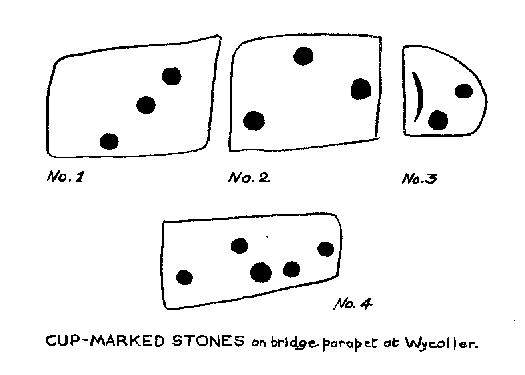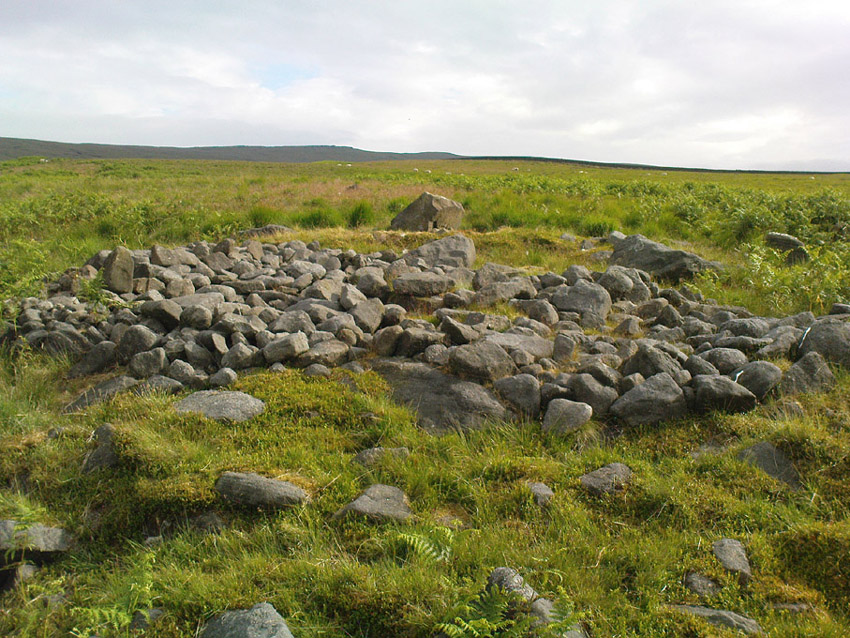Cup-Marked Stones: OS Grid Reference – SD 931 393
Easy enough to find once you’ve actually got to Wycoller. By car, the only real way to get here is from Colne, through the village of Winewall, and along the Wycoller road, which runs to a dead end. Once here, the old packhorse bridge with these cup-marks on it can’t be missed!
Archaeology & History

Weird one this! On the famous packhorse bridge close to the old hall, four of the stones have cup-markings etched onto them. It seems that at least three of the carvings are archaic; cups on one of them seems somewhat deep and appears to be medieval. A short article describing them was in the Bradford Cartwright Hall Archaeology Bulletin (1962) where they were just as puzzled about them. In 1979, J.A. Heginbottom described them in his survey on the prehistoric rock-art of upper Calderdale. The stones on which the cups were carved may have been taken from a prehistoric tomb on the edge of the moor further up the valley from here.
Folklore
Just next to this bridge is another, much older one, known locally as the Clapper or Druid’s Bridge which perhaps has some bearing on the curious cup-markings. Legend tells that this older construction was so called “because legend has it that it led to an amphitheatre where the druids held human sacrifices” – and the field just up from here (to the southwest) was known as the Dripping Stone Field. Hmmmmm…..
References:
- Bentley, John, Portrait of Wycoller, Nelson Local History Society 1975.
- Heginbottom, J.A., The Prehistoric Rock Art of Upper Calderdale, unpublished report: 1979.
- Jackson, Sidney, ‘Cup-Marked Stones at Wycoller,’ in Cartwright Hall Archaeology Group Bulletin, October 1962.
© Paul Bennett, The Northern Antiquarian
The map could not be loaded. Please contact the site owner.
